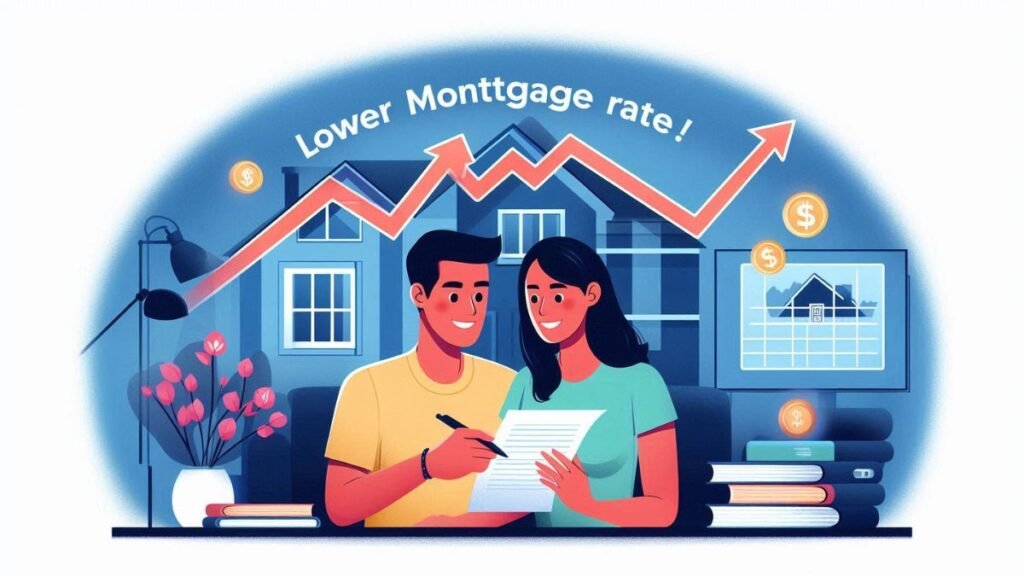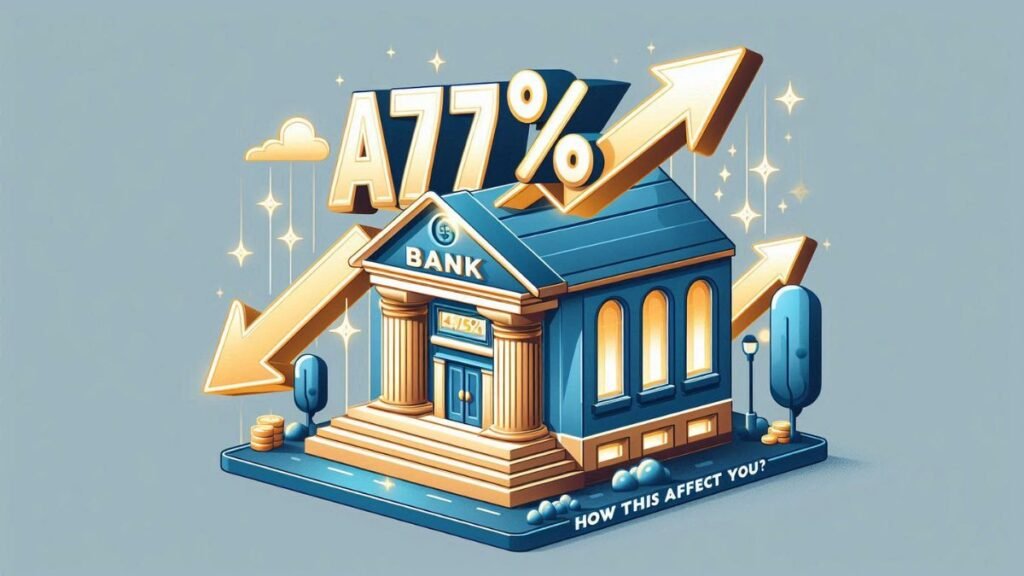Mortgage Rates: The MPC of the Bank of England has reduced the Bank Rate to 4.75% in November, from 5% in September. This was the second cut of 2024, following an easing from 5.25% to 5% at the August meting, the first since March 2020.
A rate cut was well anticipated since inflation sharply declined in September. The Bank of England uses higher lending rates to cool the economy and start to get in control of inflation. Since inflation is easing, the MPC voted cut rates, backed by eight of nine members. The next rate review is on 19 December.
What’s Happening with Inflation?
This time, the cuts are largely a respite from back-to-back cuts in inflation. The Consumer Prices Index fell to 1.7 percent in September from a peak of 2.2 percent July through August. Prior to this, the inflation rate had been within the Bank of England’s target of 2 percent for two consecutive months.
Lower air fare prices and cheaper petrol were the primary reasons for a decrease in inflation. By September 2023, annual inflation sat at 6.7%, more than 11% in October 2022.
| Factor | Details |
|---|---|
| Current Bank Rate (Nov 2024) | 4.75% |
| Previous Rate (Sep 2024) | 5.00% |
| Rate Cut History | – First rate cut in 2024: From 5.25% to 5.00% in August – Second rate cut in 2024: From 5.00% to 4.75% in November |
| Reason for Rate Cut | Decrease in inflation (CPI fell to 1.7% in Sep 2024) |
| MPC Voting Outcome | 8 out of 9 members voted to cut rates, 1 voted to hold at 5% |
| Next Decision | 19 December 2024 |
| Average Mortgage Rates (Nov 2024) | – 2-year fixed: 4.59% – 3-year fixed: 4.58% – 5-year fixed: 4.36% |
| Best Fixed Rate Deals | – 2-year: 3.96% – 3-year: 3.99% – 5-year: 3.65% |
| Best Tracker Rates | 2-year tracker: 5.06% (Best: 4.83%) |
| Standard Variable Rate (SVR) | 7.36% |
| Mortgage Deals Available (Nov 2024) | 6,338 residential mortgage deals |
| Average House Price (Oct 2024) | £293,999 (Halifax) |
| House Price Increase (YoY) | 3.9% (Halifax) |
| Energy Price Cap (Oct 2024) | £1,717 per year (with government intervention) |
| Impact of Bank Rate on Mortgages | – A 0.25% rate cut on a £200,000 loan can reduce payments by £30 per month – Fixed-rate borrowers are unaffected by rate cuts |
Mortgage rates and deals
The cuts in the Bank Rate are making many borrowers pay a lower price on their mortgages. According to better.co.uk, two-year fixed rate mortgages currently go at an average of 4.59% while three and five-year deals trade at averages of 4.58% and 4.36%. The best two-year fixed rate mortgage deal is priced at 3.96%, while three and five-year options sell at 3.99% and 3.65%.

For all tracker mortgage followers, the mean hits in at 5.06%, and the very best goes as low as 4.83%. Standard variable rates-the interest rate that people revert back to when their fixed or tracker deal expires-are at 7.36%.
As at 1 November, 6,338 deals were on offer, showing a minor decline on the October number of 6,645. This still, however indicates increased market confidence as compared to earlier in the year when, as recently as February, only 5,787 deals were on offer.
How Does the Bank Rate Effect Mortgages?
The Bank Rate directly influences the cost of mortgages. House owners with variable rate mortgages, including tracker deals, will see payments increase and decrease with the Bank Rate. If the Bank Rate drops to 0.25%, for example, a tracker mortgage priced at 5.50% would become 5.25% as a reduction, saving £30 on the monthly bill for a £200,000 loan.
A cut in the interest rate will help hardly any borrower on a fixed-rate mortgage at first, but it will hurt no borrowers when the Bank Rate rises. Some 700,000 borrowers are predicted to come to the end of fixed-rate deals in the final half of 2024, and the new deals following the recent reductions may well cost more.
House Prices and Market Trends
The housing market still looks reasonably resilient as falling inflation and interest rates further increase confidence. However, the effects of the 30 October Budget had yet to come through. Chancellor Rachel Reeves announced that the short-term 31 March 2025 end date for the temporary increase in the nil-rate stamp duty threshold will indeed mean the threshold for first-time buyers will revert from £425,000 to £300,000 and to £125,000 for everyone else from £250,000.
Halifax’s data reports that property values increased by 0.2% in October, with prices being 3.9% higher than last year and setting a record high at £293,999. Nationwide shows a 0.1% increase in October, with the average home priced at £265,738 as of last year it is up 2.4%. The Office for National Statistics (ONS) reports six consecutive months of house price rises, seeing a 2.8% increase in August compared to the same month last year.
Rightmove does note a 1.4% drop in asking prices for November, although they remain 1.2% higher than in the year prior. Activity is up 26% compared to last year, and Rightmove sees asking prices rising 4% in 2025.
Energy Costs and Inflation
its energy bills have been one driving force of inflation. The price cap on energy instituted by Ofgem was at its most north £4,279 in Q1 2023, however the government stepped in with this being reduced to £2,500. The price cap for October 2024 is £1,717 a rise on the last quarter of 10% but still lower than last winter’s level.

That is approximately how much a household pays directly debited, although the actual bill will differ for every household depending on consumption.
Finding the Right Mortgage
As mortgage rates are often unstable, it is hard to keep track of them, making this much easier when you use the mortgage tables on Better.co.uk. The table enables you to compare deals and find the best rates, using it in relation to the considerations of: you are buying or remortgaging, enter your property value and loan amount, then filter by mortgage type and term.
Bear in mind that the better mortgage rates involve higher deposits and wonderful credit history. Some deals are provided with extra fees, which can either be paid prior to receiving the deal, or simply be added to the amount you get as a loan. For example, you can compare deals according to such aspects as the introductory rate, monthly payment, or even the lender’s trail rate at the end of a deal period.
Conclusion
Recent cuts in interest rates by the Bank of England are not yet a cause for celebration for the homeowner, but the mortgage market still requires improvement. Fears of inflation begin to dissipate, and market confidence is back on track, house prices keep their steady journey upward. Still, there are imminent changes on which interested buyers should watch out: the stamp duty threshold expires in 2025.
Read More: Car Loans Explained 2025: Everything You Need to Know Before Buying a Vehicle
10 Bollywood Actors Who Mastered Extreme Training for Blockbuster Movies
Braj Verma is a resident of Rajgarh in Madhya Pradesh and is a content writer and freelancer by profession. He has a degree in Political Science from Barkatullah University, Bhopal. He has expertise in subjects like credit cards, banking, loan, insurance, political analysis and digital marketing.

